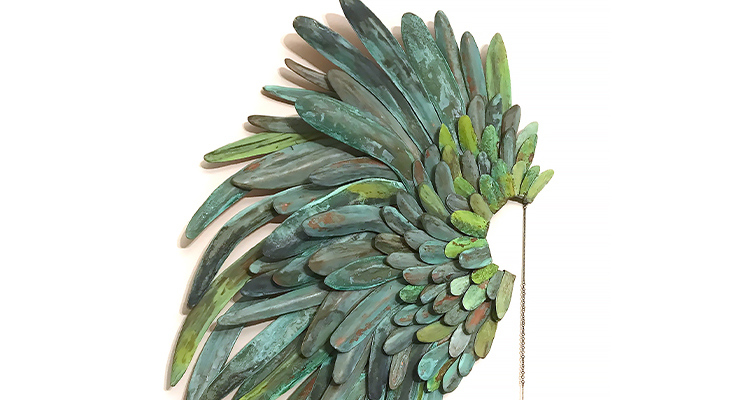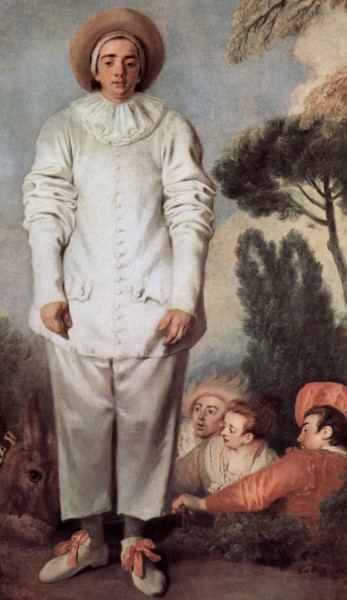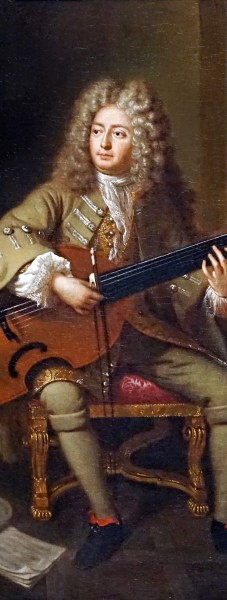FROM THE INNER BREATH TO THE MUSIC
By Vittorio Ghielmi
What is it that brings us to a state of “magic” when we enter historic buildings or towns, be they rich or humble, where our ancestors lived and created art? In those places our mind starts acting differently: it forgets daily trifles and starts acting in a creative way. More or less consciously we start imagining the people who had been there, having a silent dialogue with them through the objects they left behind. In the simple dressing room of an old theatre, you still sense a bewigged actor repeating his text to find the right inflection, so that his words ring true. On stage, a humbly dressed painter is finishing a white cloud for the backdrop with his brush of wild boar. His gesture flows with smooth self-confidence. From close up you would think that the image is inaccurate, but he knows the “gesture”: from the parterre the cloud is more real than a real cloud. He is revealing to you the essence of the cloud. The observation of these gestures brings us directly to the meaning of Art, to the creative essence of the word and of thegesture. These old buildings full of art become a spiritual place of epiphany — a moment in which we see the artists trying to capture something from the source of beauty and share it with the public, showing us a further step on the path of knowledge of our inner human nature. And nothing is more “baroque” than this process.
The Italian-born composer Jean-Baptiste Lully created a new French musical theatre in the 17th century: a form that would endure for more than a century after him and reach its apogee with Jean-Philippe Rameau. It is said that Lully created the new style by observing the intonation and gestures of the most famous of Racine's actress, Marie “La Champmeslé.” After the death of Lully, two of his most important pupils, Marin Marais and Jean-Féry Rebel, and many other great composers of the period, including the gamba virtuoso Antoine Forqueray, developed a fashion of instrumental pieces called “pièces de caractères,” short pieces that try to capture the inner gesture, mood, or “colour” of a situation, person, or object. These short musical masterpieces mirror the paintings of characters by French artists such as Watteau, Oudry, and Chardin.
French composers developed a fashion of instrumental pieces called “pièces de caractères,” short pieces that try to capture the inner gesture, mood, or “colour” of a situation, person, or object.
Around 1715, Rebel wrote his revolutionary work Les Caractères de la Danse, inspired by the French writer Jean de Bruyère's Les Caractères de Theophraste, a series of portraits of various figures from the court of Louis XIV. Rebel’s work was created in collaboration with the greatest dancer of the time, Mademoiselle Françoise Prévost. The work became extremely popular, staged also in London under the direction of Handel, and in Dresden under Pisendel. The idea of the work is to let the listener skip unexpectedly and without interruption from oneaffetto (mood, character) to another: it is a patchwork of small fragments of different dances. In the same period Rebel published another revolutionary work, Les Éléments, which is the summa of the pièces de caractère style: the elements (earth, air, water, and fire) are described with special musical effects in a suite that combines them in all possible ways.
A friend of Rebel, Marais outlined numerous “rules” for the most perfect and rhetorically controlled style of music for the viola da gamba. I recently discovered an important manuscript of music by Marais, with hundreds of annotations, written by the composer himself or by a student: each note bears up to four or five signs and an incredible variety of text instructions and expressions that show us the complexity of his musical language. For Marais each note had a different colour, a different articulation, and a different dynamic, all in a incredibly rich flow of emotions — as a 17th-century actor approaching a play of Racine would use a different colour on each syllable.
In this program we alternate, in a theatrical way, the rich language of the solo gamba repertoire with orchestral pieces, which I believe should be played with the same wealth of expressions.
The rhetoric described in the 17th and 18th centuries for French déclamation, and for singing and acting, was so deeply codified and manneristic that we would surely be astonished upon hearing it, as were the foreign contemporaries seeing French opera for the first time: “… those movements of the head, arm, eyebrows; those languid appogiaturas, limp trills, inhuman cries; those sounds torn from the depths of the bowels and accompanied by long moans; all that immense mass of affectation which we generously call expression” (Anonymous, La soirée perdu à l’Opéra).
But seen from the right perspective, a strong concept of the total union of the arts appears in French opera and instrumental music: “with each gesture of the dancer, one must be able to read the sentiment which moves him; his steps are as words which have passed into his heart” (J. G. Sultzer, Théorie générale des beaux arts). Words and inner gestures; words, as notes, are inner gestures. We can approach the performance of early masterpieces “outside,” trying to reconstruct historical images and scenarios, or we can regenerate them from within ourselves, from the breath and bodies of today’s dancers and musicians: from inner breath to the gestures, from the gestures to the materials of music, from the music to the declamation, and from this to the wonderful writing and incredible beauty of the compositions we are playing for you in these concerts.
ABOUT THE COMPOSERS
In curating this program of French baroque music, Vittorio Ghielmi alternates music by two great virtuosos of the viola da gamba (Marais and Forqueray) with orchestral music by masters of music for the stage. We offer a brief introduction to the composers here. The final piece on the program has been created by Vittorio himself.
Jean-Féry Rebel
A violinist in the French court orchestra, Rebel became renowned in Paris for his simphonies de danse, choreographed “symphonies” independent of the opera or ballet. The last and most famous of these was Les Elémens, which opens with an introduction titled “Le Cahos,” a portrait in sound of the beginnings of the universe. The four elements emerge: the bass instruments represent Earth, the flutes Water, the piccolos Air, and the violins Fire.
Marin Marais
Marin Marais was one of Louis XIV's most renowned instrumentalists, a virtuoso of the viola da gamba. He studied opera composition with Lully, and in addition to his hundreds of pieces for solo viola da gamba, he also wrote five operas for production at the court. Alcyone was the most popular of these operas, particularly famed for a fiery storm scene, culminating in the instrumental Tempête.
Jean-Baptiste Lully
Born Giovanni Battista Lulli in Florence in 1632, the son of a miller, Lully went to Paris at age 14 to act as garcon de chambre for the King’s cousin, who wished to practise her Italian. Somewhere in the mix he learned violin and became an accomplished dancer. Astonishingly, within a few years he started composing, and rose through the ranks to become Director of Music at Louis XIV’s court and of the Paris Opéra, one of the most powerful music directors of any time. With his librettist Philippe Quinault, he created a new genre, the tragédie en musique.
Antoine Forqueray
After a few years at court, Forqueray’s reputation as the most accomplished viol player of his time allowed him to establish a career as a performer and teacher in Paris. Contemporary accounts describe his exceptional virtuosity, able to adapt the acrobatics of Italian violinists into athletic passage-work for the viol. His obituary comments on his “lively and fertile imagination,” and he was renowned for his skill as an improviser, with a leaning toward “the whimsical, fantastic, and bizarre.”
Jean-Philippe Rameau
A keyboard player, composer, and theorist, Rameau didn’t turn to opera until age 50, stunning Parisian audiences. He makes treasure of the solid tradition of Lully, and of the experiments of the generation of Marais and Rebel, bringing them to perfection with his new harmonic inventions.
IMAGE CREDITS
Pierrot by Jean-Antoine Watteau.
Portrait of Marin Marais by André Bouys.



